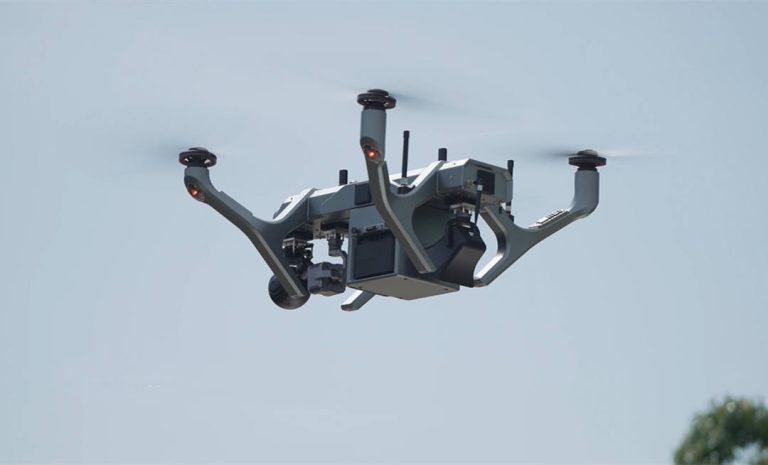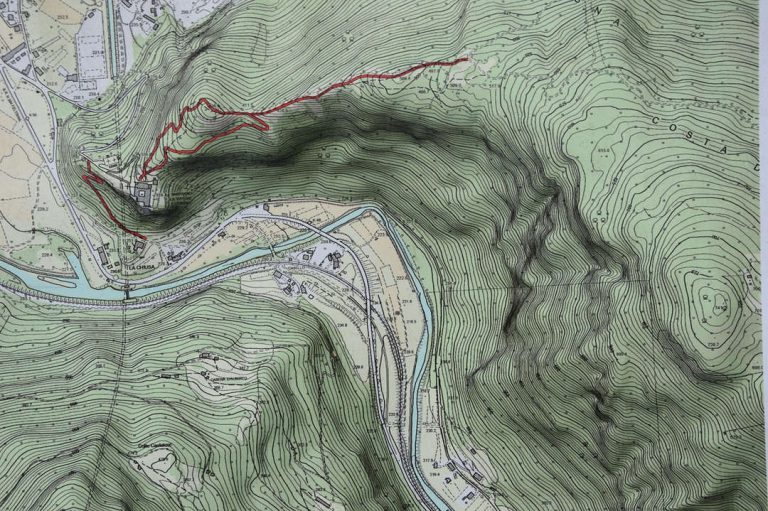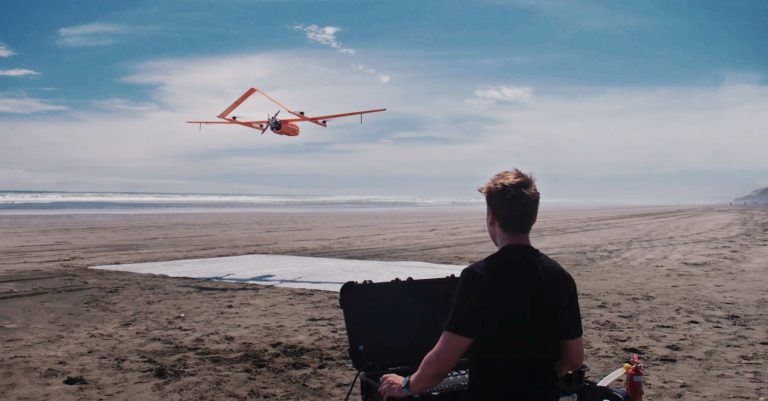What Is an FPV Drone? The Complete Guide (2025)
If you’ve ever watched a drone race or a breathtaking chase scene filmed from the sky, you’ve probably already seen an FPV drone in action.
FPV stands for First-Person View, and it’s exactly what it sounds like — you see what the drone sees, as if you’re sitting right in the cockpit.
Unlike regular GPS drones that fly themselves, FPV drones are all about manual control, speed, and immersion.
Whether it’s for heart-pounding racing, smooth cinematic shots, or even military operations, FPV drones are changing the way people experience flight.
In this article, we’ll break down what an FPV drone really is, how it works, how it differs from normal drones, and why so many pilots are getting hooked on this incredible flying experience.
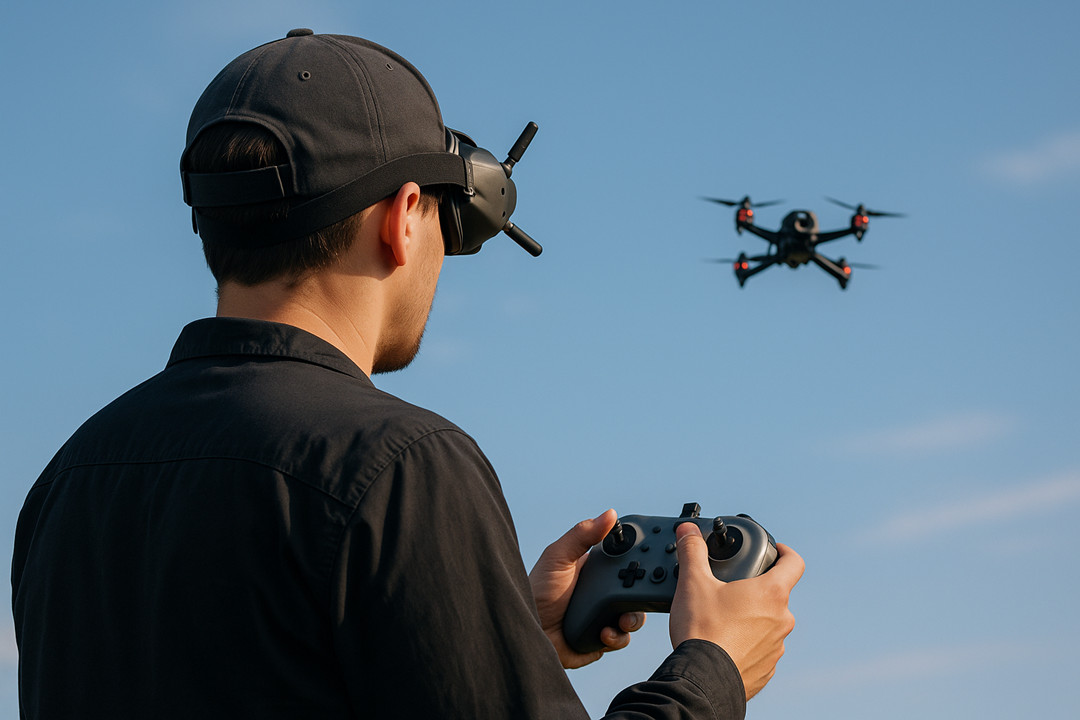
What is an FPV Drone?
An FPV drone (First-Person View drone) is a type of unmanned aircraft that streams a live video feed from an onboard camera to the pilot, so the pilot flies as if they were sitting inside the aircraft.
Instead of watching the drone from the ground with line-of-sight, an FPV pilot looks through goggles or a monitor and controls the craft using a radio transmitter — that immersive view is the defining feature.
A typical FPV drone’s anatomy and how each piece contributes:
- FPV camera: A small, lightweight camera mounted on the front. It’s optimized for low light and fast motion, so the image stays clear even when the drone is diving or turning hard. The camera’s job is to capture the view the pilot needs to fly — not necessarily to produce cinema-grade footage (that’s what a separate HD camera is for on cine rigs).
- Video transmitter (VTx): The VTx takes the camera’s video and broadcasts it over radio frequencies to the pilot’s goggles or monitor. Different systems use analog or digital transmission; analog is simple and low-latency, while digital gives much clearer images and can be recorded in HD.
- FPV goggles/monitor: This is what the pilot looks through. Goggles block outside light and place the camera’s view right in front of your eyes, which makes the flight much more immersive and precise. Many goggles include a DVR (to record the flight) and diversity antennas to improve reception.
- Radio transmitter (the controller) and receiver (Rx): The pilot’s hand controller sends control inputs (stick movements) to the drone’s receiver. That link controls throttle, pitch, roll, and yaw. It’s separate from the video link — one carries controls, the other carries video.
- Flight controller: The drone’s brain. It reads the pilot’s commands (from the receiver), reads sensors (gyro, accelerometer, and sometimes GPS), and controls the speed of each motor via the ESCs so the drone does what you ask.
- ESCs (Electronic Speed Controllers) and motors: ESCs convert the flight controller’s commands into power changes for the motors. The motors spin the propellers and produce thrust and torque.
- Battery: Usually a high-discharge LiPo battery that delivers the short bursts of current needed for aggressive flying.
- Optional: DVR, OSD, antennas, HD camera: On many builds, you’ll find an On-Screen Display (OSD) that overlays telemetry on the FPV feed (battery voltage, flight time), a separate HD camera for cinematic recording, and specialized antennas to extend range and reliability.
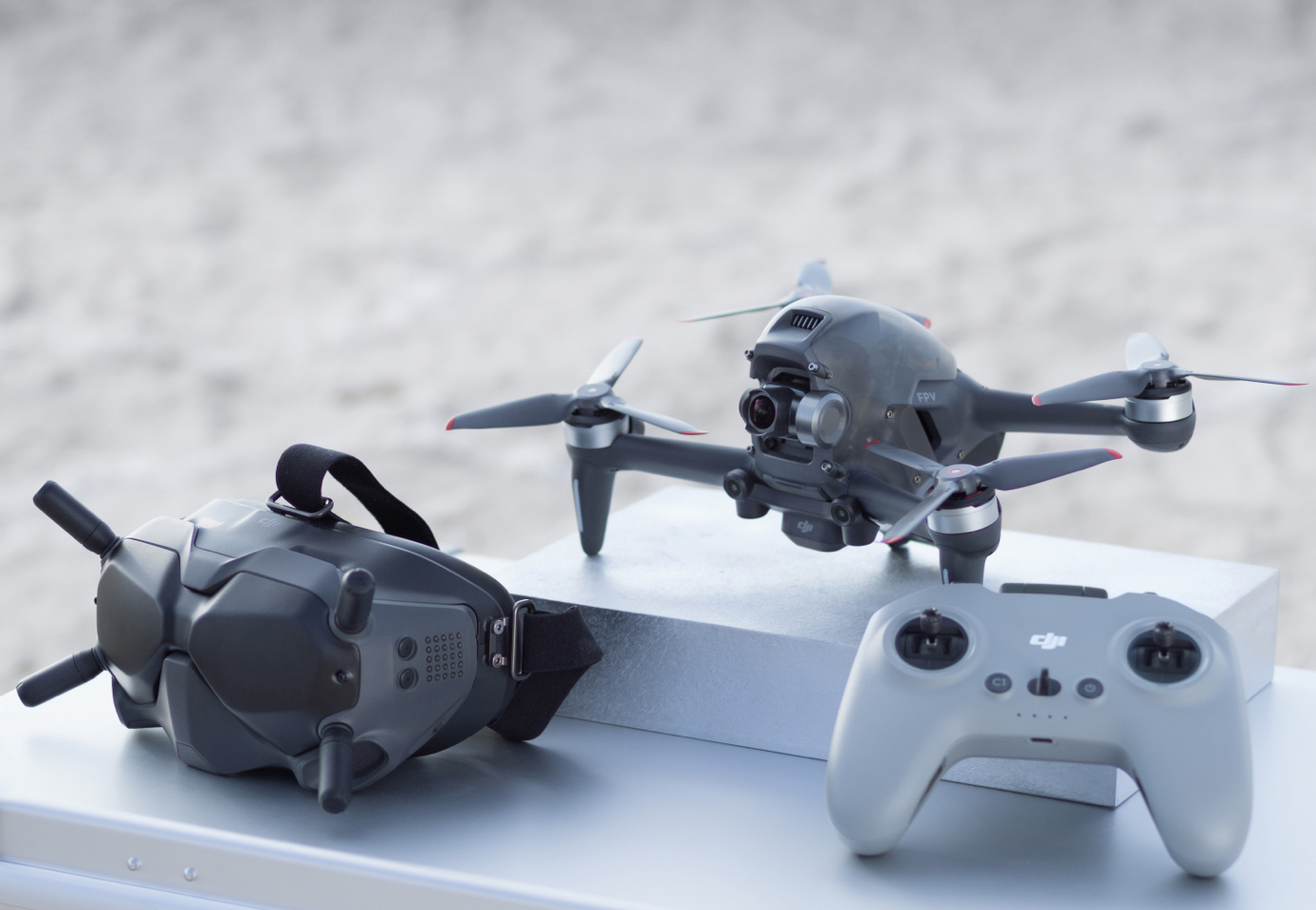
How Do FPV Drones Work?
Under the hood, an FPV drone is a system of specialized parts working together. At the simplest level, there are three data flows: control (your stick inputs), telemetry (battery, GPS, speed), and video (the live first-person view).
These flows use different hardware and links, so each can be optimized for responsiveness, range, or picture quality depending on the pilot’s priorities.
- Pilot looks through goggles — the goggles are receiving a continuous video broadcast sent by the drone.
- Camera captures the scene — the FPV camera records what’s in front of the drone and sends that video to the VTx.
- VTx transmits the video — the transmitter broadcasts the signal on a chosen frequency (common FPV bands are in the GHz range), using enough power to reach the pilot’s goggles.
- Goggles receive and show live video — the pilot sees the scene with only a small delay (latency). Lower latency is critical for racing and acrobatic flying.
- Pilot moves the sticks — your controller sends stick inputs to the drone’s receiver.
Flight controller translates inputs — the flight controller calculates motor outputs to achieve the desired motion and sends signals to ESCs. - ESCs drive motors — motors change speed, propellers produce lift/torque, and the drone moves accordingly.
- Feedback loop — sensors continuously feed data back to the flight controller so the craft remains stable (in assisted modes) or responds smoothly to pilot input (in manual/acro modes).
Types of FPV Drones
FPV drones come in many forms, and each type is designed with a specific flying style or purpose in mind. From tiny indoor quads to long-range explorers, the differences lie in how they fly, what they carry, and who they’re built for. Let’s take a closer look at the main categories you’ll come across.
1. Based on Flying Style or Function
Tiny Whoops
Tiny Whoops are the perfect starting point for beginners. These palm-sized drones are built for indoor flying and feature protective ducts around their propellers, so they can safely bump into walls or furniture without damage.
They’re lightweight, quiet, and incredibly fun to fly in tight spaces. While they lack the power of larger drones, their simplicity makes them ideal for practicing FPV control and orientation.
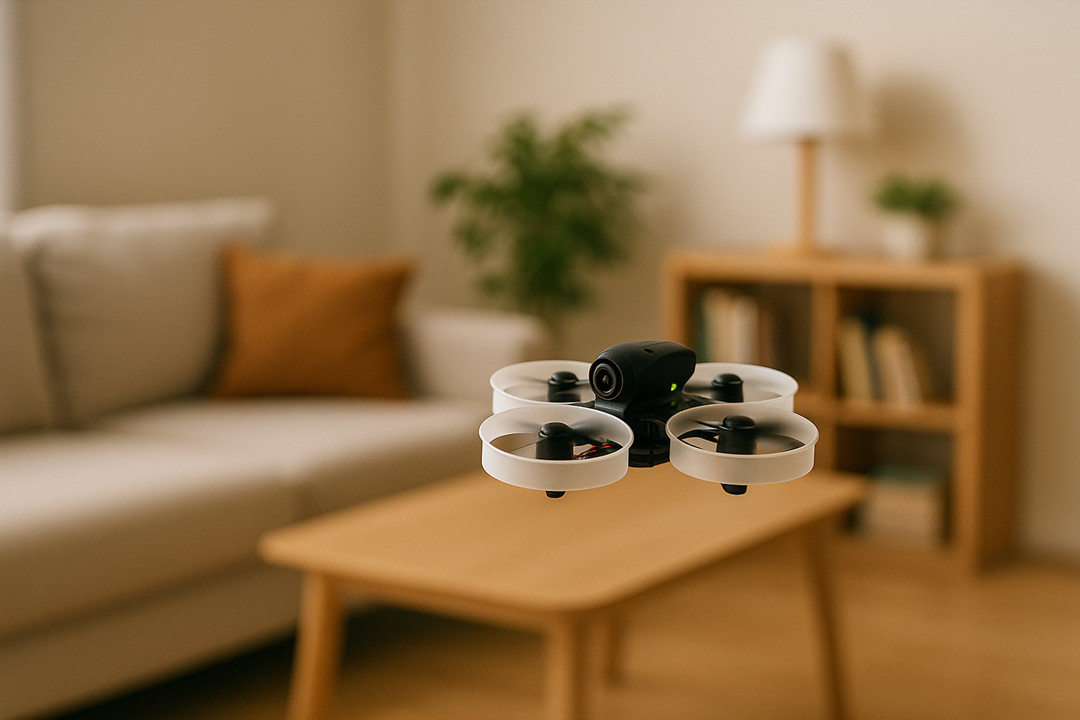
Cinewhoops
Cinewhoops are slightly larger than Tiny Whoops and are designed for capturing smooth, cinematic footage. They usually carry small action cameras like GoPros and are equipped with ducted propellers for added safety when flying close to people or objects.
Cinewhoops are popular among filmmakers and content creators because they can deliver stable, close-up aerial shots indoors or outdoors without risking damage.
FPV Racing Drones
Built purely for speed and agility, FPV racing drones are the machines that dominate drone racing circuits. Most of them have 5-inch propellers and can reach speeds of over 200 km/h. Their lightweight carbon fiber frames and powerful motors give them incredible acceleration and responsiveness.
These drones are flown entirely in manual (acro) mode, meaning the pilot has full control—no GPS assistance, no stabilization. They’re exhilarating to fly but also demanding, making them better suited for experienced pilots.
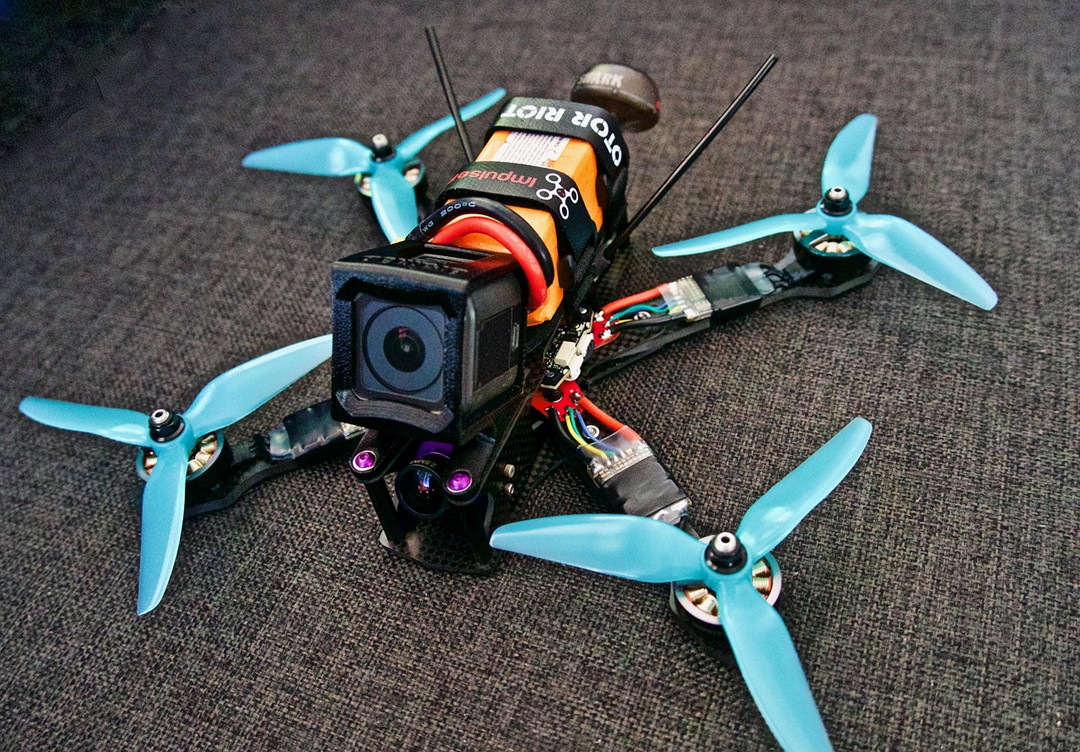
Toothpicks
Toothpick drones get their name from their ultra-thin, minimalist frames. They are extremely lightweight, which allows them to accelerate quickly and perform agile maneuvers.
Because of their fragile arms, they’re not as durable as freestyle or racing drones, but they make up for it with their nimbleness and fun flying style. Toothpicks are great for learning acro flight outdoors, especially in smaller areas where larger drones might feel cramped.
Freestyle Drones
While racing drones are built for speed, freestyle drones are built for expression. Pilots use them to perform flips, rolls, dives, and smooth, flowing maneuvers. Freestyle drones are usually tuned to respond smoothly rather than sharply, allowing for fluid, cinematic movement.
Many freestyle pilots attach HD cameras to record their flights, resulting in beautiful, immersive FPV videos that capture the feeling of flight itself.
Long-Range Drones
As the name suggests, long-range FPV drones are designed to fly far from the pilot—sometimes several kilometers away—while maintaining a clear video signal. They are usually larger, with propellers over 7 inches and high-capacity batteries for extended flight times.
These drones often include GPS for added safety features like return-to-home. They’re ideal for exploring mountains, coastlines, or remote landscapes, though long-range flights are subject to strict regulations in many countries.
Cinelifters
Cinelifters are the heavyweights of the FPV world. These powerful drones are built to carry professional-grade cameras, such as RED Komodo or Blackmagic models, for high-end film production.
With six or eight motors and reinforced frames, cinelifters can lift heavy payloads while maintaining stable flight. They’re expensive and require skill to operate, but they’ve become a favorite tool for film studios and commercial shoots that need dynamic aerial footage.
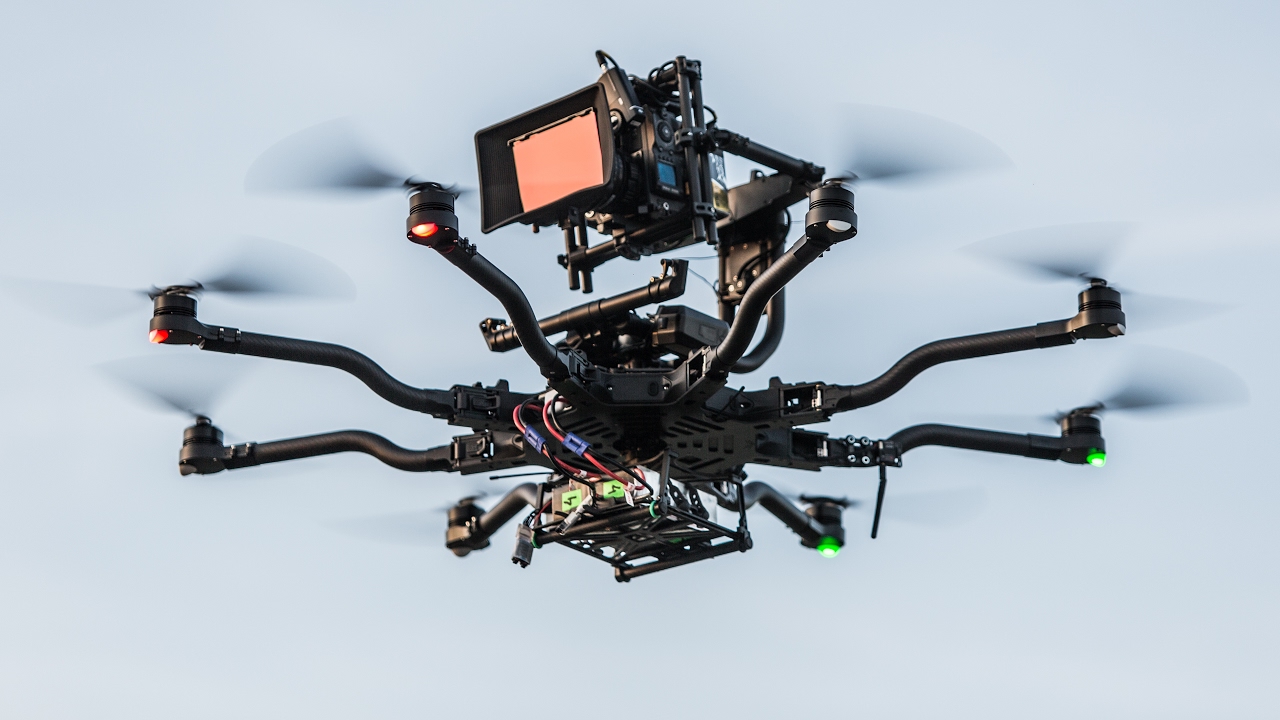
X-Class Drones
X-Class drones take FPV racing to the extreme. These are oversized racing drones, often exceeding one meter in motor-to-motor distance. Their huge propellers and high-speed motors make them incredibly fast and loud, but also challenging to handle.
Because of their size and cost, X-Class drones are mainly flown in professional events rather than by casual hobbyists.
2. Based on Size
FPV drones can also be categorized by their size, which directly affects their handling, endurance, and where they can be flown.
Small Drones
Small FPV drones—those with propellers under 4 inches—are the most agile and safest for indoor use. Tiny Whoops, Micro Drones, and Toothpicks fall into this category. They’re great for learning, practicing, or flying in confined areas.
Medium Drones
Medium-sized drones, typically with 4-6 inch propellers, represent the most popular FPV category. The 5-inch drone in particular has become the gold standard for racing and freestyle flying. It offers a perfect balance between speed, control, and flight time, making it a favorite among both hobbyists and professionals.
Large Drones
Large drones feature propellers over 7 inches and are designed for carrying heavier batteries or cameras. They’re commonly used for long-range flights or professional cinematography, where endurance and stability matter more than agility. These drones tend to fly slower and require more open space.
What Are the Benefits of Flying an FPV Drone?
An Immersive Flying Experience
Flying an FPV drone is unlike anything else. With FPV goggles, you see exactly what the drone sees, as if you’re sitting in the cockpit. This first-person perspective creates a sense of speed, height, and freedom that’s far more engaging than flying from the ground. Many pilots describe it as the closest thing to real flight without leaving the ground.
Greater Control and Precision
Because FPV drones transmit real-time video with minimal delay, pilots can make split-second decisions and perform complex maneuvers with accuracy. This precision is especially useful for racing, freestyle flying, or navigating tight spaces where traditional drones struggle. You’re always aware of your surroundings from the drone’s point of view, allowing smoother and more confident control.
Stunning Cinematic Footage
FPV drones are capable of producing dynamic, immersive footage that’s hard to achieve with regular GPS drones. Pilots can fly close to objects, through narrow gaps, or along winding paths, creating dramatic shots that bring viewers right into the action. That’s why FPV drones are increasingly used in filmmaking, real estate, and advertising.
Applications and Use Cases of an FPV Drone
FPV technology has exploded out of the backyard and into a powerful tool that is revolutionizing industries and creating entirely new forms of art and entertainment.
Let's dive into the many faces of FPV.
Cinematic Filmmaking and Content Creation
This is where most people have encountered FPV without even knowing it. Remember that breathtaking, seamless shot in a Marvel movie that flies through a crumbling building, or that heart-pounding sequence in an action sports video that follows a mountain biker down a narrow trail? That’s FPV.
- The "Magic Shot": FPV drones can create shots that are physically impossible with traditional camera rigs, cranes, or even regular drones. They can whip around corners, dive off cliffs, and fly through tight windows, creating a visceral, immersive experience that puts the viewer in the action.
- The Director's New Tool: For filmmakers and YouTubers, FPV unlocks a new visual language. It’s not just about getting an aerial view; it’s about capturing motion and energy in a way that feels more like a rollercoaster than a photograph. This has become the gold standard for adventure sports, automotive commercials, and music videos that want to project speed and dynamism.
Drone Racing and Competitive Sport
Imagine a NASCAR track, but in three dimensions. Drone racing is a high-speed, technically demanding sport where pilots, wearing FPV goggles, navigate their custom-built drones through complex courses at speeds exceeding 80-100 mph.
- The "Digital Cockpit": Pilots don't see the course from the sidelines; they see it from the perspective of their drone, weaving through gates and obstacles with millimeter precision. Races are often broadcast with the pilots' live video feeds, allowing the audience to share the intense, high-G experience.
- A Global Community: What started in local parks has evolved into a professional sport with organized leagues like the Drone Racing League (DRL), offering substantial prizes and global television deals. It’s a perfect blend of engineering, piloting skill, and sheer nerve.
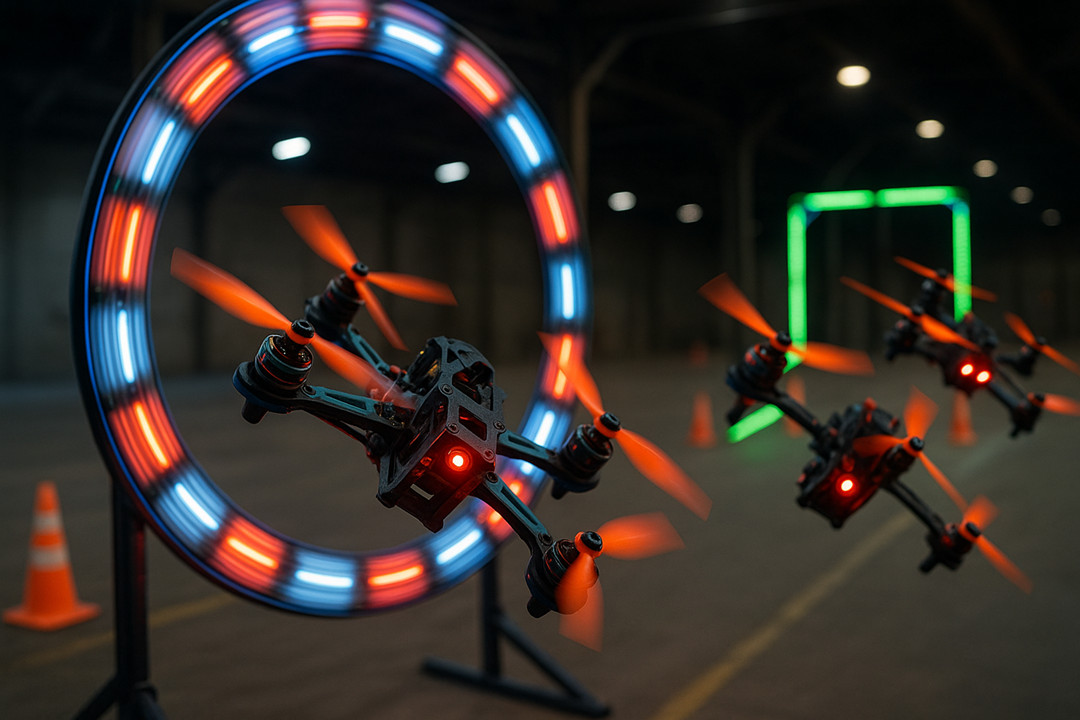
Freestyle and Recreational Flying
If racing is about speed and efficiency, freestyle is about expression and creativity. Freestyle pilots use FPV drones to perform incredible flips, rolls, dives, and tricks in spectacular locations—from abandoned buildings to majestic mountain ranges.
- Flying as an Art Form: The goal isn't to be the fastest but to flow through an environment in the most beautiful and technically impressive way possible. These pilots are the aerial equivalent of parkour athletes or skateboarders, using the landscape as their canvas.
- Pushing Physical Limits: The drones used for freestyle are built to be incredibly robust and powerful, capable of withstanding crashes and performing complex maneuvers that would tear a standard drone apart. The videos produced by top freestyle pilots are truly jaw-dropping works of art.
Inspection and Industrial Tasks
This is one of the most valuable and rapidly growing professional applications. FPV drones are being deployed to inspect places that are difficult, expensive, or dangerous for humans to access.
- Bridge & Infrastructure Inspection: Instead of erecting massive scaffolding, an FPV pilot can fly through the intricate steel beams underneath a bridge, getting a high-definition, close-up view of potential corrosion or damage.
- Wind Turbine & Power Line Inspection: They can safely navigate around spinning turbine blades or high-voltage power lines, identifying maintenance issues without requiring a hazardous climb.
- Confined Space Entry: Inspecting the inside of a chimney, a storage tank, or a sewer system becomes far safer and cheaper with a small, agile FPV drone.
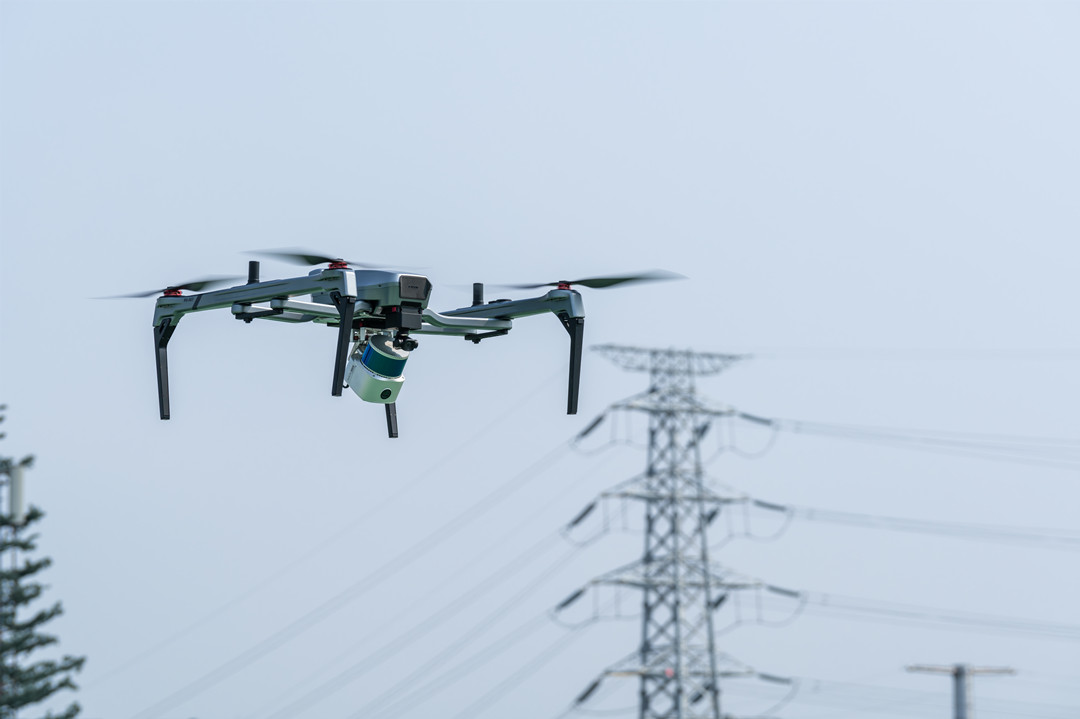
Mapping, Surveying, & Long-Range Reconnaissance
While traditional mapping drones fly automated, grid-like patterns, FPV brings a new level of flexibility and efficiency to large-scale data gathering.
- Rapid Terrain Mapping: For construction, mining, and agricultural projects, FPV drones equipped with high-resolution cameras can be used to capture data over vast and complex terrain quickly. The pilot's ability to dynamically adjust the flight path in real-time is invaluable for navigating canyons, forests, or construction sites where a pre-programmed flight might fail.
- Surveying with Agility: Surveyors use FPV drones to capture the data needed to create highly accurate 3D models and topographic maps. The immersive view allows the pilot to ensure they are capturing every critical angle and avoiding obstacles, often completing surveys in a fraction of the time of traditional ground-based methods.
- Long-Range Reconnaissance: This application is critical for security, wildlife management, and disaster assessment. Using specialized long-range video transmitters and efficient aircraft, FPV pilots can visually scout areas miles away in real-time. This provides immediate intelligence on everything from the perimeter of a forest fire to the movement of wildlife herds or security threats along a border, all without the physical deployment of personnel.
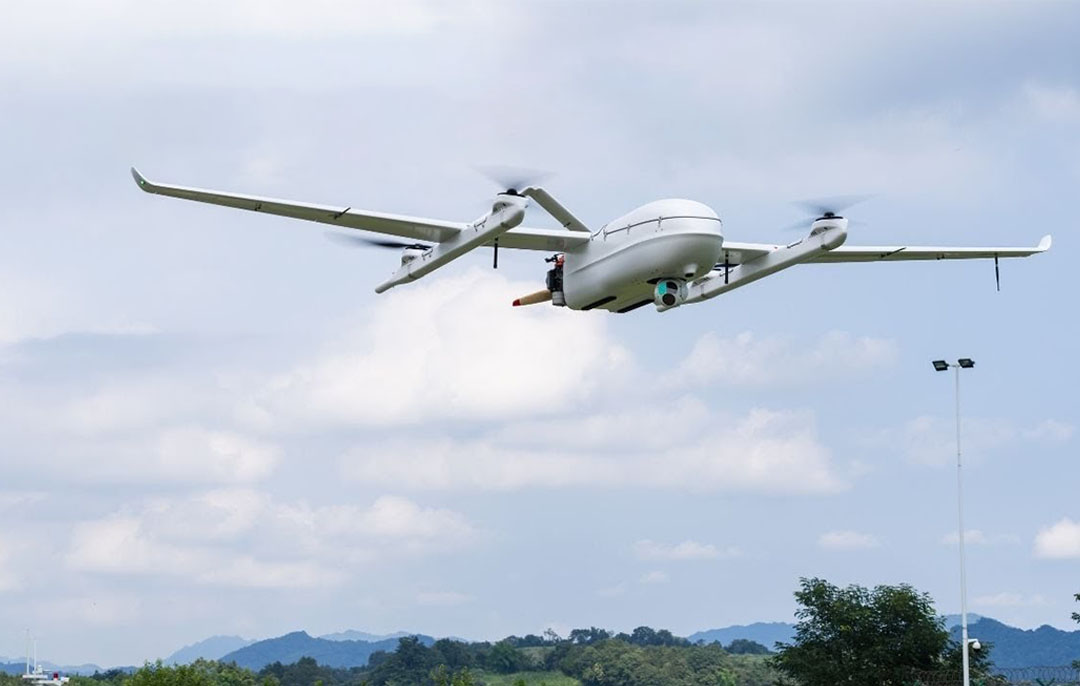
Search, Rescue, and Emergency Response
In disaster scenarios, time is critical, and access is often limited. FPV drones are becoming invaluable tools for first responders.
- Rapid Situational Awareness: An FPV drone can be launched in minutes to fly over a disaster zone, such as after an earthquake or flood, providing real-time video to command centers and helping to identify survivors and assess damage.
- Navigating Complex Environments: Their agility allows them to fly inside collapsed structures or through dense forests where traditional drones might struggle, helping to locate missing persons much faster than ground teams alone.
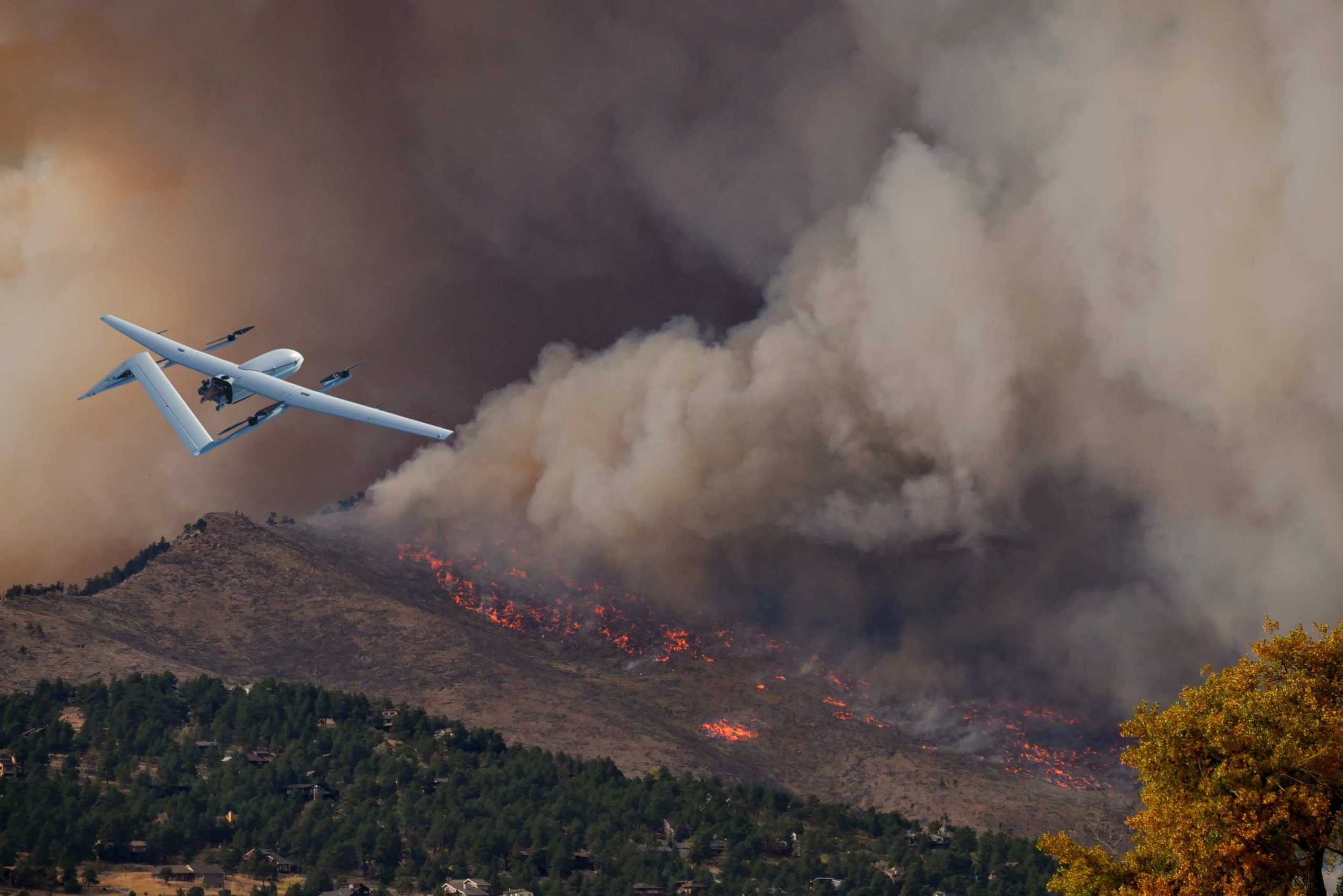
Tactical and Military Applications
This is a more sobering, but critically important, application. The same technology that allows for breathtaking cinematic shots has been adapted for modern warfare, which directly addresses some of your specific keywords.
- Tactical Reconnaissance: FPV drones provide soldiers with the ability to "see around corners" or over walls without exposing themselves to danger, offering a crucial tactical advantage.
- Loitering Munitions (Kamikaze Drones): These are FPV drones equipped with an explosive payload. The pilot flies the drone precisely to a target (like a tank or a fortified position) and deliberately crashes into it, detonating the charge. Their low cost and high precision have made them a significant feature in modern conflict zones.
Agriculture & Farming
Even in the peaceful fields of agriculture, FPV finds a use. While standard drones are used for mapping fields, FPV drones are perfect for more hands-on tasks.
- Livestock Monitoring: A farmer can quickly and effortlessly fly over a herd to check on the animals' health and well-being without disturbing them.
- Crop Spot-Checking: If a farmer spots a potential problem area in a field, they can dispatch an FPV drone to get a close, fast, and immersive look, identifying issues like pest infestations or irrigation problems on the fly.
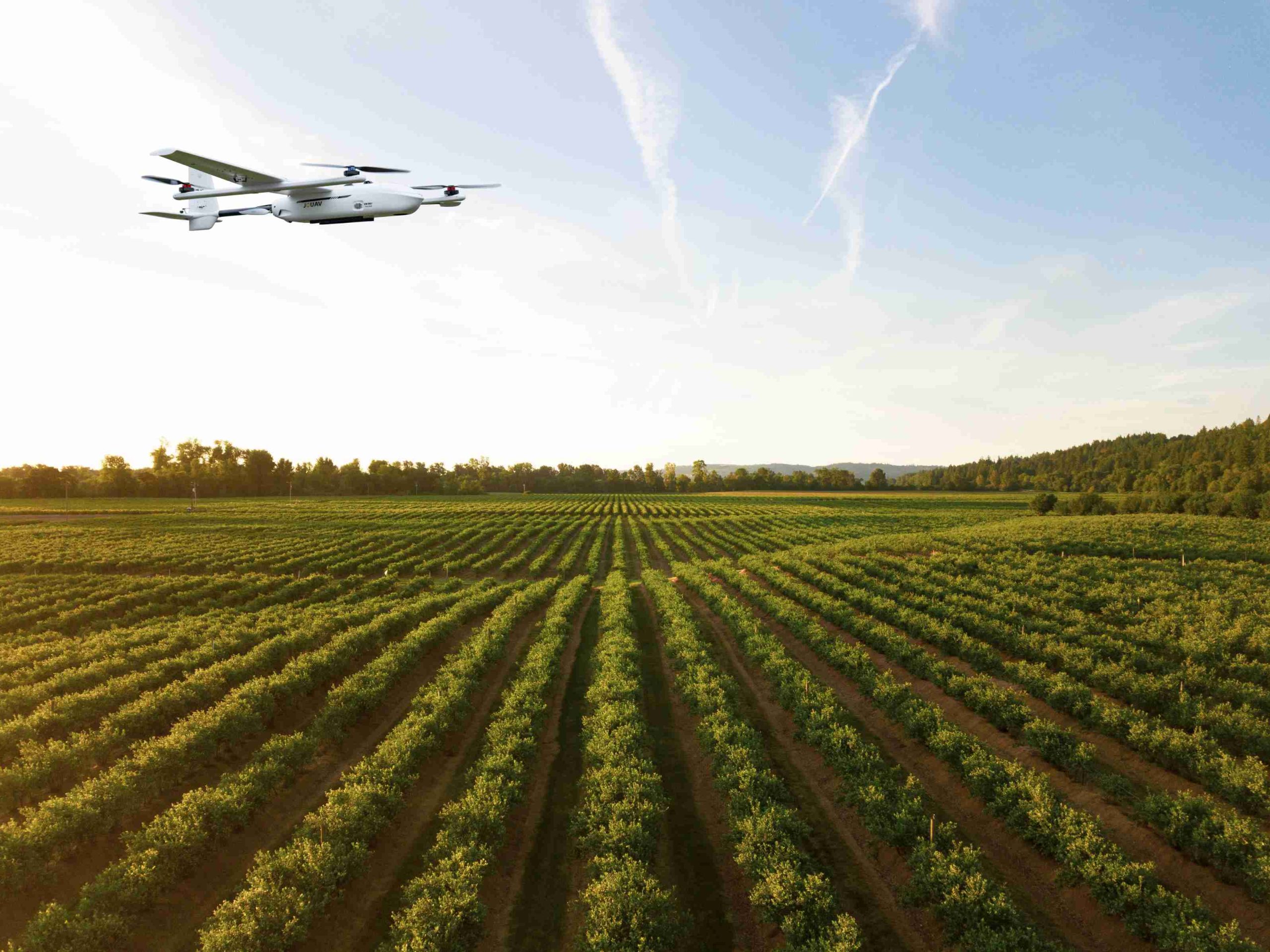
What is the Best FPV Drone?
Here are several well-regarded FPV drones, covering different user levels and use cases:
| Drone Model | Best For | Key Features |
| DJI Avata 2 | User-friendly all-in-one | Excellent DJI digital FPV system, easy to use, and includes everything needed to fly. |
| iFlight Nazgul Evoque F5 V2 | Premium freestyle | High-end performance, robust build, and professional features. |
| GEPRC MARK5 DC HD O3 FPV | Freestyle/racing | Fast and agile with a high-quality O3 HD video system. |
| GEPRC Cinelog30 V3 | Cinematic | Optimized for smooth video recording in tight spaces, making it great for creators. |
| NewBeeDrone Hummingbird V4 | Indoor/tiny whoop | Small and agile for indoor flying, and is an excellent starting point for learning to fly FPV. |
| iFlight Chimera7 Pro V2 O4 6S HD | Freestyle/long-range | A larger, 7-inch drone that can be stable and efficient for longer flights. |
| JOUAV CW-80E | Professional surveying and mapping, long-range surveillance | VTOL (Fixed-wing + multi-rotor), 8-hour flight time, 20-kg heavy payload capacity |
How to Choose Your First FPV Drone?
Buying your first FPV drone is exciting, but it helps to treat it like choosing a teacher rather than a toy. The right starter drone will build your confidence and skill; the wrong one will collect dust after a few crashes.
Step 1: The Non-Negotiable First Step — The Simulator
Before you spend a single dollar on a physical drone, you must invest in a simulator. This is the single most important piece of advice any experienced pilot will give you.
- Why? Flying an FPV drone in "Acro" or "Manual" mode is nothing like driving a car or flying a camera drone. It's a completely new skill. Your brain needs to build the muscle memory to correct the drone's orientation instinctively. In a sim, crashing is free and instant. In real life, it costs time, money, and heartache.
- What do you need? All you need is a computer and a compatible radio controller. We highly recommend buying a good radio first (like a Radiomaster Boxer or Zorro) and using it to practice on the sim for a few weeks. This way, you're building muscle memory on the actual gear you'll use later.
- Popular Simulators: Liftoff, Velocidrone, Orqa FPV, and Skyzone are excellent choices. They accurately replicate the physics of real FPV flight.
If you skip this step, you will crash and break your new drone. Guaranteed.
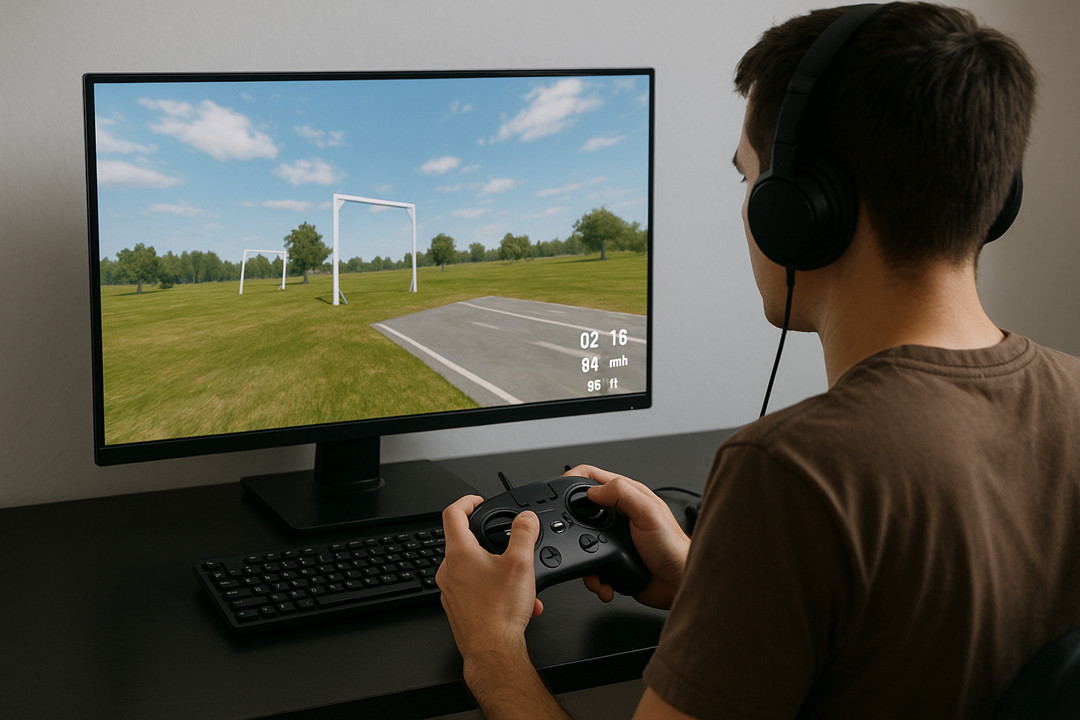
Step 2: Define Your "Why" & Set Your Budget
Be honest with yourself about what you want to achieve.
"I just want to see if I like it without a huge commitment."
- Your Path: Start with a Quality Radio + Simulator. If you're still hooked after 10-20 hours, get a Tinywhoop Ready-to-Fly (RTF) Kit (like the BetaFPV Cetus X or an EMAX Tinyhawk III RTF).
- Budget: $150 - $300
"I'm all in! I want to fly outdoors and eventually capture cool videos."
- Your Path: Radio + Simulator first. Then, move to a 2-3 inch toothpick drone or a 3.5 inch cinewhoop. These are powerful enough for outdoor flying but are still relatively lightweight and durable.
- Budget: $300 - $600 (for drone, goggles, and radio separately)
"I want to make cinematic videos right away, and I'm okay with a higher cost for ease of use."
- Your Path: The DJI Avata combo is designed for you. It's a more expensive all-in-one system that prioritizes safety (prop guards) and stunning video out of the box.
- Budget: $1,000+
- Remember: Your total budget must include the drone, goggles, radio, batteries, and a charger. It adds up quickly!
Step 3: Understand the Three Buying Paths
This is the core of your decision. There are three main ways to get into the hobby, each with pros and cons.
| Path | What It Is | Pros | Cons | Best For |
| RTF (Ready-to-Fly) Kit | A box with everything you need: drone, basic goggles, radio, and charger. | Easiest start. No research needed. Just charge and fly. | Lower quality gear. You'll likely outgrow it fast. Limited performance. | The cautious, "try-it-before-I-commit" beginner. |
| BNF (Bind-N-Fly) | You buy the drone only. You supply your own radio and goggles. | Your choice of quality gear. Easily upgradeable. Better performance. | Requires research. Higher initial cost. You need to learn to "bind" your radio. | The committed beginner who knows they'll stick with it. |
| PNP (Plug-and-Play) | The drone comes without a receiver. You need to install it yourself. | Most flexibility for custom builds. | Requires technical skill to solder and install. | Not for beginners. Avoid this for your first drone. |
Our Recommendation for Most Beginners: The BNF Path. Why?
Because it forces you to invest in a quality radio and goggles from the start. When you eventually crash and break your first BNF drone (you will), your good radio and goggles will still be there, ready for your next, better drone. With an RTF kit, you often have to replace everything.
Step 4: Key Features to Look For in Your First Drone
When shopping for that first BNF or RTF drone, prioritize these features:
1. Durability is King: Look for a strong, flexible frame made of carbon fiber or nylon composite. Ducted propellers (like on whoops and cinewhoops) are your best friend—they protect the props and whatever you crash into.
2. Size Matters (Start Small):
- Tinywhoops (under 75 mm): Perfect for indoor and backyard flying. Nearly indestructible. A safe and fun way to learn.
- 2-3 Inch "Toothpicks": Great for outdoor parks. More power than a whoop but still light enough to survive crashes.
- Avoid 5-inch Freestyle Drones (for now): They are powerful, heavy, expensive to repair, and can be dangerous in untrained hands.
3. A Good Safety Feature: Angle Mode: While your goal is to fly in full Acro mode, a drone with a stabilized Angle Mode (which self-levels like a camera drone) is a fantastic safety net. It can help you regain control and land safely when you panic.
4. Community and Parts Support: Buy a popular model! If you choose an obscure drone, finding replacement parts, firmware, or help online will be hard. Drones from iFlight, GEPRC, or EMAX have huge communities and plenty of spare parts available.
Your Action Plan: A Simple Checklist
1. Buy a quality multi-protocol radio (e.g., Radiomaster Boxer) and an FPV simulator. Practice for at least 10-15 hours.
2. Set a realistic total budget for everything.
3. Decide on your path. We recommend BNF for the committed beginner.
4. Research and buy your goggles. (Digital like DJI or Walksnail if your budget allows, or a good analog pair like Eachine EV800D).
5. Choose a durable, popular beginner BNF drone (e.g., a Tinywhoop or a 3-inch Cinewhoop) that is compatible with your goggles and radio.
6. Buy batteries, a proper charger, and any necessary tools.
Is FPV Drone Flying Legal?
You've got your drone, you've practiced on the sim, and you're ready to launch. But before you take to the skies, there's a critical question you must answer: Is this even legal?
The short answer is yes, FPV drone flying is legal in most countries, including the U.S., but it comes with a specific set of rules you must follow. Ignorance isn't an excuse in the eyes of the law (or the aviation authority), and breaking these rules can lead to hefty fines and serious safety risks.
Think of it like driving a car. Driving is legal, but you need a license, you have to follow speed limits, and you can't just drive anywhere you want. FPV flying is similar—it's a privilege that comes with responsibility.
FPV Goggles vs. The "Visual Line of Sight" Rule
This is the single biggest legal hurdle for FPV pilots. Most aviation regulations worldwide are built on a fundamental principle: the pilot must maintain Visual Line of Sight (VLOS) with their aircraft at all times. This means being able to see your drone with your own unaided eyes (except for glasses).
So, how can you fly with goggles on your face that block your view?
The solution is a Visual Observer (VO) or "Spotter."
- The Rule: When flying with FPV goggles, you MUST have a second, competent person next to you acting as your visual observer. Their job is to keep their eyes on your drone, maintaining VLOS, while you fly via the video feed. They warn you of obstacles, other aircraft, and people. You and your spotter must be in direct communication.
- The Exception: Flying completely alone, relying only on your goggles, is called Beyond Visual Line of Sight (BVLOS) flight. This is generally illegal for recreational pilots without a hard-to-get waiver, even for long-range systems.
Recreational vs. Commercial
In the United States, the FAA (Federal Aviation Administration) splits drone operations into two main categories, each with its own rulebook. Getting this distinction right is your first step.
The Bottom Line: If you receive any form of compensation, benefit, or if the flight is furthering a business, it's commercial. This includes getting paid for footage, using it on a company website, or even doing a "free" flight for a friend's business.
| Criteria | Recreational Flight (Flying for Fun) | Commercial Flight (Flying for Work) |
| Governing Law | Section 44809 (The "Exception for Limited Recreational Operations") | Part 107 (Small Unmanned Aircraft Systems) |
| Purpose | Purely for fun and personal enjoyment. | Any business use: real estate, photography, surveying, inspections, etc. |
| Pilot Certification | TRUST Test (The Recreational UAS Safety Test). Free, online, and can't be failed—it's an educational tool. | Part 107 Remote Pilot Certificate. Requires passing a formal, in-person knowledge test at an FAA testing center. |
| Registration | Required for drones weighing 0.55 lbs (250 g) and more. You register under the "Exception for Recreational Flyers" category. | Required for drones weighing 0.55 lbs and more. You register under "Part 107" and your registration number acts as your "N-number." |
| Visual Line of Sight | Required. For FPV, a visual observer (spotter) is mandatory. | Required. For FPV, a visual observer (spotter) is mandatory. |
The Universal Rules (Apply to Almost Everyone)
Whether you're a recreational flyer or a commercial operator, these foundational rules are non-negotiable:
- Altitude Limit: Stay below 400 feet above ground level in most airspace. This is to avoid conflict with manned aircraft.
- No-Fly Zones: This is a big one. You cannot fly near airports, military bases, national parks, stadiums during events, or over large groups of people. Use an app like the FAA's B4UFLY or Aloft to check your location before you fly.
- Airspace Authorization: Want to fly in controlled airspace (near an airport)? You must get prior authorization, typically instantly through the LAANC (Low Altitude Authorization and Notification Capability) system, available in many drone apps.
- Right of Way: You MUST always yield to manned aircraft. They have the right-of-way every single time.
- Don't Fly Recklessly: This includes flying under the influence of drugs or alcohol or operating in a way that endangers people or property.
- Registration Marking: Your FAA registration number must be displayed on the exterior of your drone.
Special Considerations for FPV Pilots
- Long-Range FPV: Is it legal? Technically, no—not under standard recreational or Part 107 rules because it violates the VLOS rule, even with a spotter. True long-range flight requires a specific BVLOS waiver, which is complex and not typically granted to hobbyists.
- Night Flying: Allowed for both recreational and Part 107 pilots, but your drone must have anti-collision lighting visible for at least 3 statute miles. For FPV, this is especially tricky, as your spotter needs to be able to see the drone clearly in the dark.
- Privacy: Just because you can see something from the air doesn't mean you should record it. Be respectful. Do not fly over private property in a way that harasses individuals or invades their reasonable expectation of privacy. Local and state laws often address this.
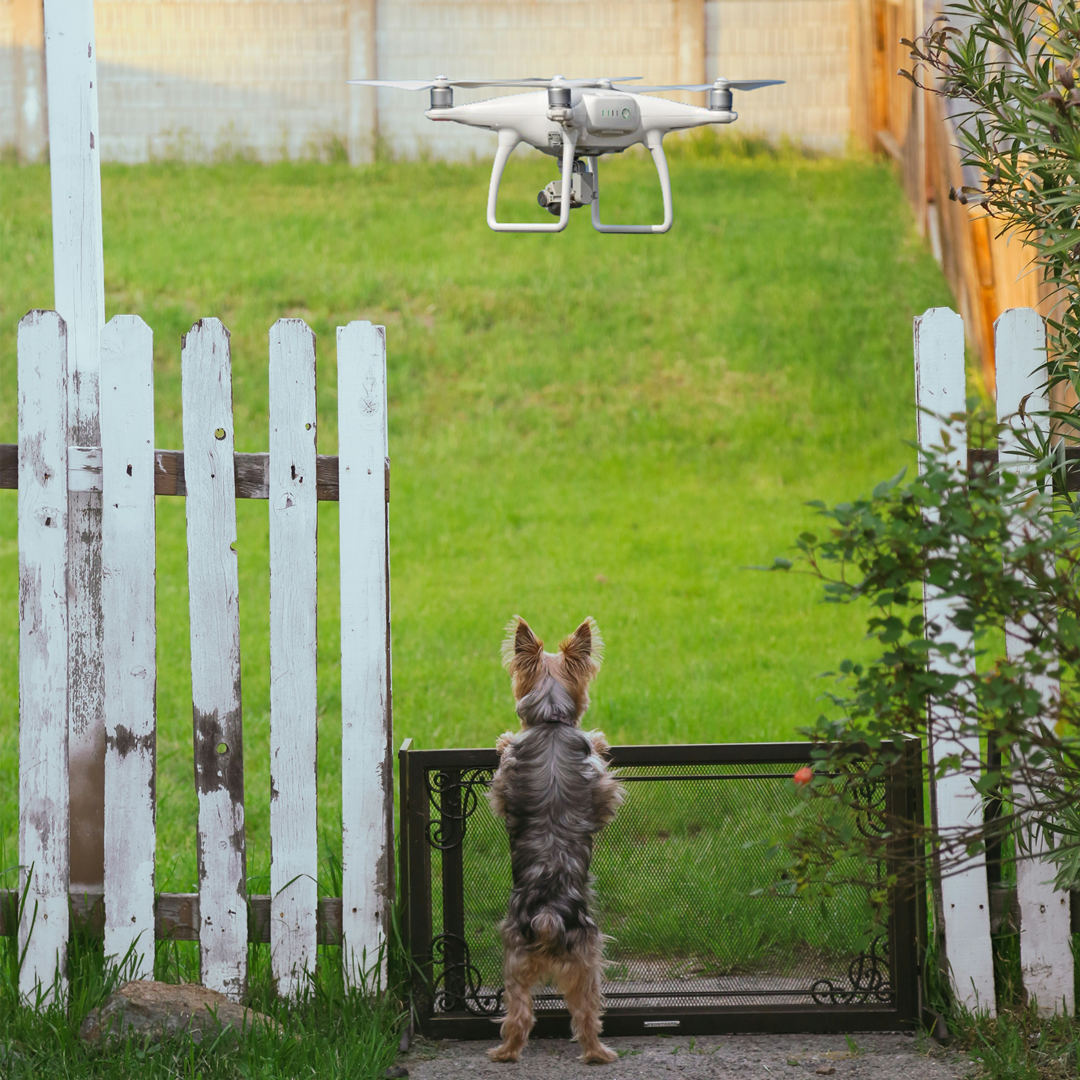
Your Pre-Flight Legal Checklist
Before every single flight, make it a habit to run through this list:
Am I flying recreationally or commercially? I know which set of rules to follow.
- Is my drone registered? The number is clearly marked on the outside.
- Have I checked a map (B4UFLY/Aloft)? I am not in a no-fly zone and have LAANC authorization if needed.
- Do I have my spotter? My visual observer is briefed and ready.
- Is my location safe? I'm not over people, moving vehicles, or sensitive property.
- Am I sober and focused? Ready to fly responsibly.
The world of FPV is incredible, and following these rules isn't just about avoiding trouble—it's about being a responsible ambassador for the hobby. By flying legally, you help ensure that the skies remain open for all of us.
How Much Does an FPV Drone Cost?
The cost of FPV isn't just a single price tag for a drone. It's an ecosystem. To avoid sticker shock, you need to budget for the entire system. Let's break down the costs from the beginner's all-in-one kit to the professional's custom rig and even industrial-grade platforms.
Tier 1: Beginner All-in-One (RTF): $200–$500
If you just want to try FPV without a big commitment, an RTF kit is the easiest route. For $200–$500 you can get a small ready-to-fly package that includes the drone, basic goggles or a monitor, a controller, a battery or two, and a charger.
These kits are tuned for safety and ease of use: prop guards, simplified flight modes, and low power. They’re great for learning orientation and seeing what FPV feels like, but they’re often proprietary, and you’ll probably outgrow them.
What to expect: short flight times, limited range, and inexpensive components that are cheap to replace. Good examples in this tier include Tiny Whoop-style kits and entry-level Avata-style bundles.
Tier 2: Committed Hobbyist (Mix-and-Match / BNF): $500–$1,500
This is the sweet spot for most people getting serious about FPV. You buy a quality radio and practice in a simulator first, then pick a Bind-and-Fly drone or a mid-tier RTF that pairs with your goggles.
Expect to spend $150–$350 on a decent multi-protocol radio, $200–$700 on goggles (analog or basic digital), $200–$600 on a solid BNF airframe, and another $150–$400 on batteries, a charger, and spare props.
What you get: better video, longer flight times, more durable frames, and upgrade paths. This tier is where you can start doing freestyle and light cinematic work without replacing the whole system every time you crash.
Tier 3: DIY & High-End Builds: $400–$2,000+ (drone only)
If you like building, tuning, and squeezing performance from every gram, the DIY path is for you. Buying parts separately lets you pick premium motors, a lightweight carbon frame, a modern digital video system, and a high-end flight controller.
A budget DIY build might be ~$400, a competitive freestyle rig $600–$900, and a top-tier cine or HD-ready build over $1,000 once you add an HD unit or action camera.
Hidden cost here: your time. DIY saves money in the long run only if you enjoy soldering and troubleshooting. You’ll also need tools and replacement parts.
Tier 4: Professional / Industrial Platforms: $50,000+
Professional FPV and VTOL platforms (for surveying, mapping, and long-range inspection) are in a different league. These systems are hardened for long endurance, have certified software, may include LiDAR or multispectral cameras, and often come with support contracts.
Prices vary wildly: a basic prosumer VTOL might start around $5K, while fully equipped systems with payloads and software workflows can be $30K–$100K or more.
If you’re buying for commercial work, include software licensing, training, and insurance in your budget — these can add significantly to lifetime cost.
Ongoing & Hidden Costs to Budget For
Don’t forget the consumables and peripherals. Plan on buying multiple batteries (4–8 is common), a quality balance charger, spare props, a few spare motors or ESCs, and repair materials.
Batteries alone are a recurring cost: expect $20–$40 per battery and longer-term replacement every 1–2 years depending on use.
Other invisible costs include map/app subscriptions, replacement antennas, goggles repairs, and shipping for parts. If you fly competitively or professionally, insurance and maintenance contracts become relevant too.
Cost Examples by Goal (quick guide)
If you want a simple decision map:
- Try FPV casually: $200–$400 (Tiny whoop or cheap RTF kit).
- Learn and grow seriously: $500–$1,200 (good radio + goggles + BNF 3–5" quad + spares).
- Shoot cinematic footage: $1,000–$3,000 (digital HD system like DJI O4/O3, action camera, or cine rig build).
- Commercial mapping/survey: $10,000+ (VTOL or enterprise platform + sensors + software).
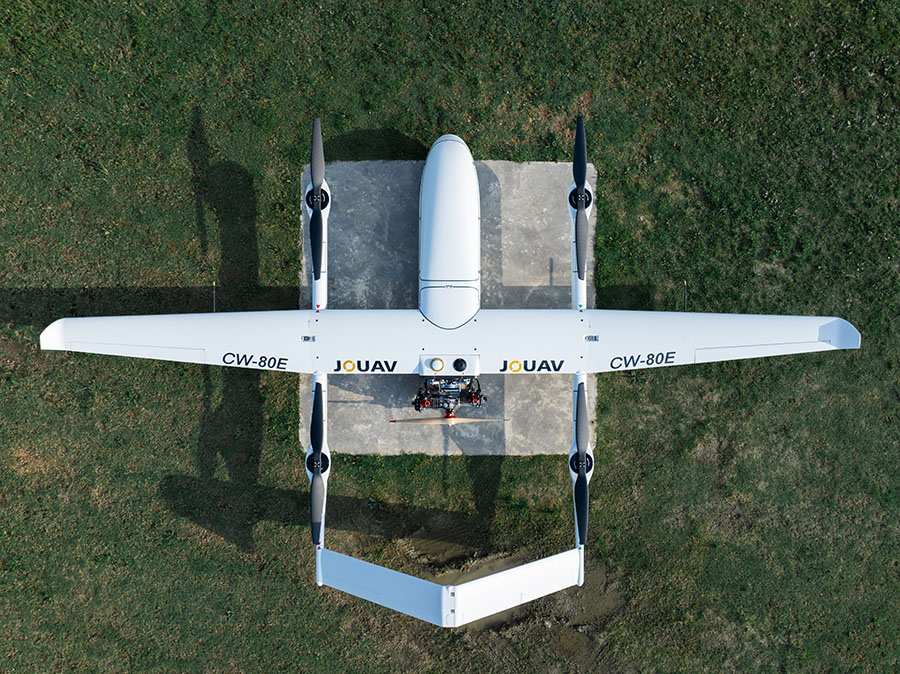
FAQ
What is the Point of an FPV Drone?
The main purpose of an FPV drone is to give pilots a first-person flying experience—seeing exactly what the drone sees in real time. Unlike traditional drones controlled from a distant third-person view, FPV drones immerse you directly into the flight path through a live video feed displayed in goggles or on a screen.
This makes flying feel more intuitive, thrilling, and precise. FPV drones are used for freestyle flying, racing, cinematic video capture, and even professional applications like inspections or search and rescue.
How Far Can an FPV Drone Fly?
The range of an FPV drone depends on its type and the transmission system used.
- Analog FPV systems typically offer a range of 1 to 2 kilometers, sometimes more with upgraded antennas.
- Digital FPV systems (like DJI or Walksnail) can reach 4 to 10 kilometers under ideal conditions with a clear line of sight.
However, regulations in many countries require pilots to maintain a visual line of sight (VLOS), meaning you should technically keep the drone within your visible range, regardless of its technical capability.
Can I Use an FPV Drone for Photography?
Yes—but with some nuances. FPV drones are primarily designed for immersive flight and agility, not traditional aerial photography. However, cinematic FPV drones, or cinewhoops have become increasingly popular among filmmakers and content creators.
These compact, stabilized drones can carry small action cameras (like GoPro or DJI Action cameras) to capture smooth, dynamic shots that standard drones can’t achieve. For still photography, though, traditional GPS drones such as the DJI Mavic or Air series are usually more suitable.
How Hard is It to Fly an FPV Drone?
Flying an FPV drone is significantly more challenging than piloting a GPS drone. There’s no automatic stabilization, obstacle avoidance, or return-to-home function (unless you add GPS modules).
Instead, FPV flight relies entirely on manual control. Beginners must learn throttle management, orientation, and how to recover from crashes. The best way to start is with a flight simulator (like Liftoff or Velocidrone) before flying a real drone. Once you get used to it, the reward is a level of control and excitement unmatched by any other drone experience.
Do FPV Drones Have GPS?
Not all FPV drones come with GPS, but some do—especially hybrid or long-range drones. Basic FPV models focus on manual control and agility, so they skip GPS to reduce weight and latency.
However, advanced FPV drones may include GPS for position hold, return-to-home, and failsafe functions, which can be lifesavers during long-range flights or signal loss. Professional FPV drones, such as the JOUAV CW series, fully integrate GPS and navigation systems for precise surveying, mapping, and autonomous missions.



